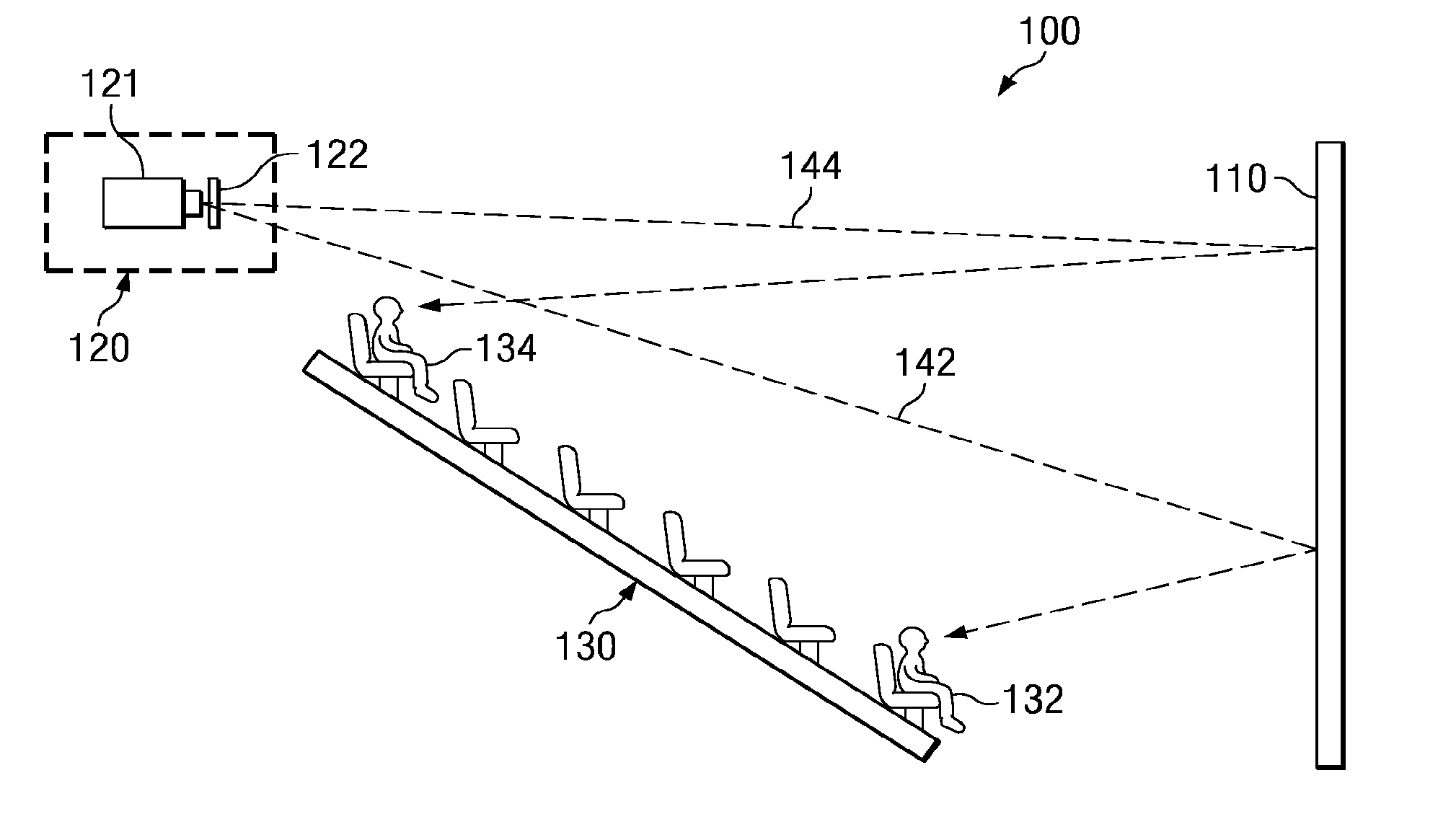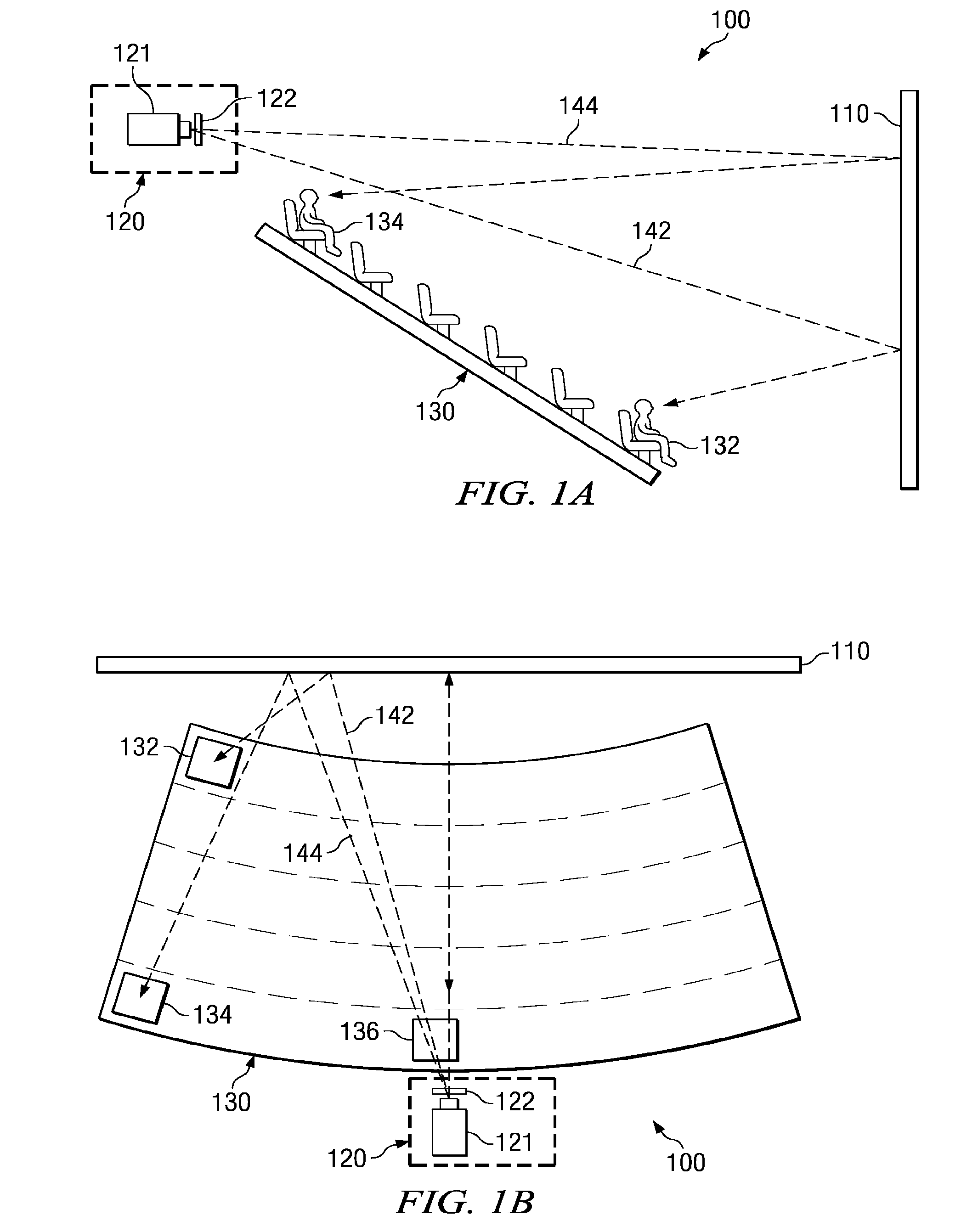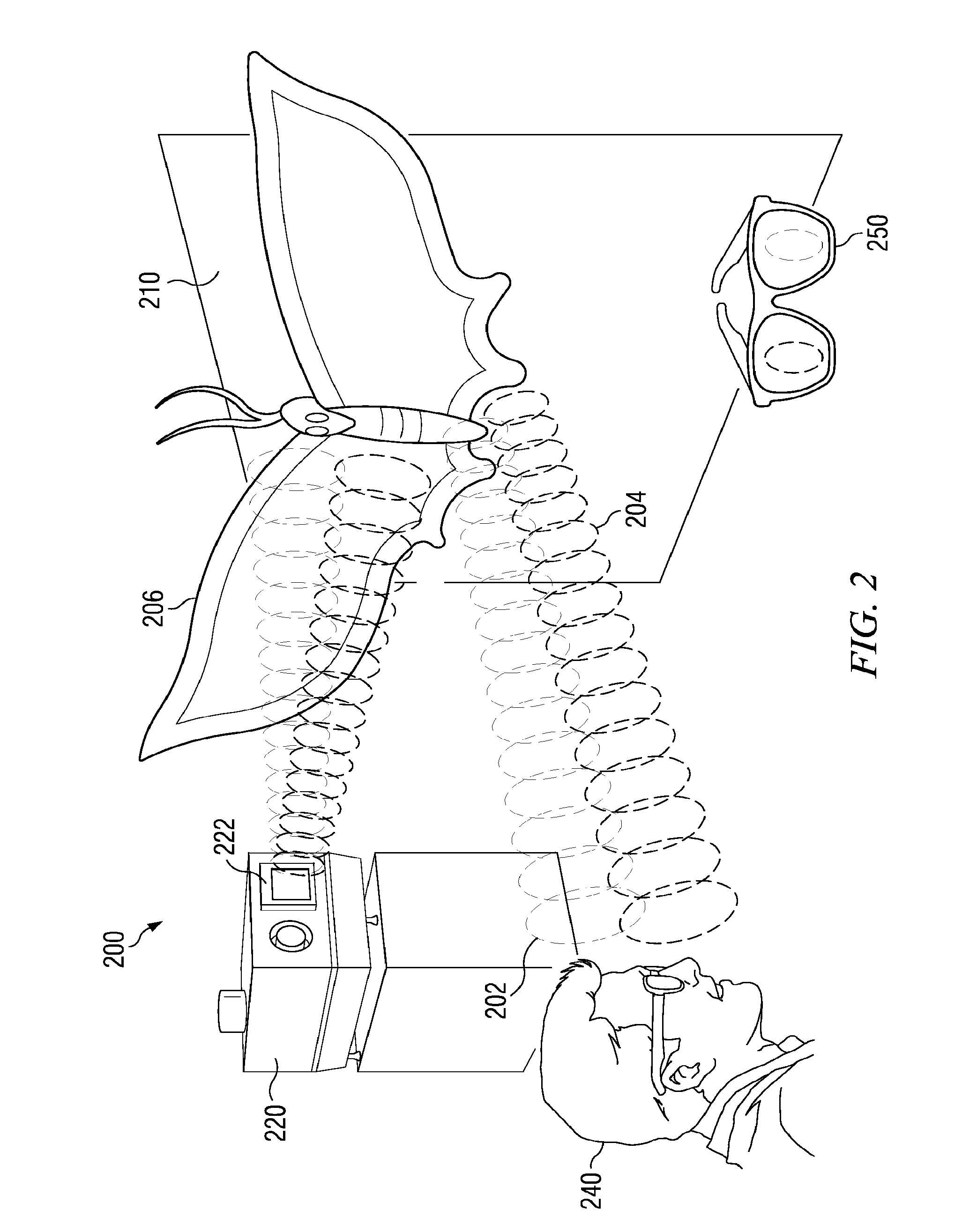Polarization preserving front projection screen material
a technology of polarization preservation and front projection, applied in the field of front projection screens, can solve the problems of poor polarization preservation, erode the quality of the experience, and create eye fatigue, and achieve the effects of improving light control, enhancing brightness, uniformity and contrast, and maintaining the optimum gain characteristics
- Summary
- Abstract
- Description
- Claims
- Application Information
AI Technical Summary
Benefits of technology
Problems solved by technology
Method used
Image
Examples
Embodiment Construction
[0059]FIG. 1A is a schematic diagram illustrating a side view of a typical movie theatre 100 and FIG. 1B is a schematic diagram showing a top-down view of a movie theatre 100. Movie theatre 100 includes a reflective screen 110, a projector platform 120, and a viewing area 130. Projector platform 120 may include projector 121 and polarization switch 122. Viewing area 130 may provide seats organized in rows away from the screen, defining a viewing area or viewing for viewers that may sit (or stand) in different places within the viewing area 130. For instance, a first viewer may be located at the front-left viewing position 132 of the movie theatre 100, and receive reflected light 142. A second viewer may be located at the rear-left viewing position 134 and receive reflected light 144. A third viewer be located in a central viewing position 136.
[0060]With recent developments of polarization technology, there has been a resurgence of three dimensional movies, decoded with matched eyewe...
PUM
| Property | Measurement | Unit |
|---|---|---|
| length | aaaaa | aaaaa |
| wavelength | aaaaa | aaaaa |
| vertical offset angle | aaaaa | aaaaa |
Abstract
Description
Claims
Application Information
 Login to View More
Login to View More - R&D
- Intellectual Property
- Life Sciences
- Materials
- Tech Scout
- Unparalleled Data Quality
- Higher Quality Content
- 60% Fewer Hallucinations
Browse by: Latest US Patents, China's latest patents, Technical Efficacy Thesaurus, Application Domain, Technology Topic, Popular Technical Reports.
© 2025 PatSnap. All rights reserved.Legal|Privacy policy|Modern Slavery Act Transparency Statement|Sitemap|About US| Contact US: help@patsnap.com



